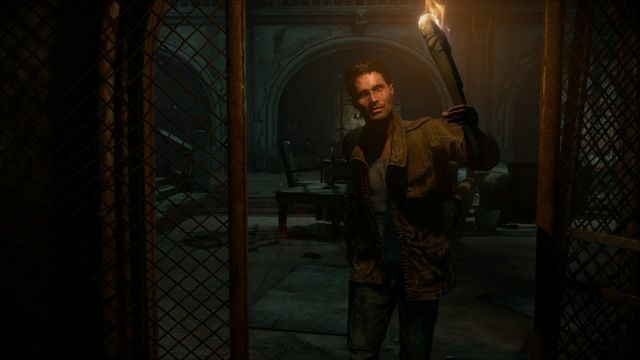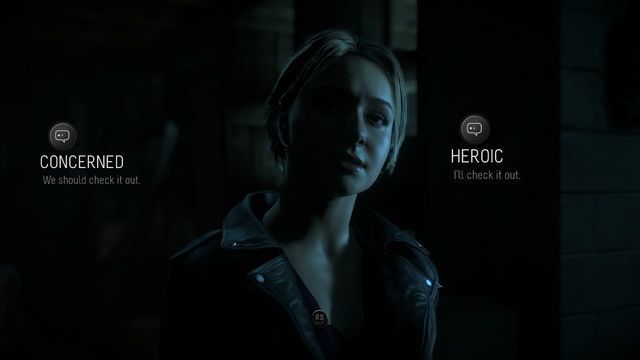The snow-ridden chill of The Thing – all three of them – backs this bit of interactive genre voyeurism. Everything else is just horror platitudes. The isolated wood cabin; the broken phones; the masked man with a machete; Until Dawn knows what it is and wants to be, but its lumbering cinematic aspirations are complacent within the genre. They’re doing nothing of consequence once separated from technology.
What an oddity the motion capture effect is too, spending millions to render stars Rami Malek and Hayden Panettiere in polygons even though they both stand on live sets. Warner Bros. motion captures Andy Serkis and gets the fantasy of Gollum. Supermassive Games motion captures Hayden Panettiere and outputs… Hayden Panettiere.
It’s a nine hour version of films which rarely break 90-minutes.
Hollywood would produce this for under $10 million, and they often do. It’s all those R-rated gore-laden audience pleasers can cost and still turn a profit. Video games demand full price bloat, and bloat is what Until Dawn has. It’s a nine-hour version of films that rarely break 90-minutes for pacing reasons. Friday the 13th – the entire original series combined – is barely any longer. Intelligent editing creates brevity, trimming all fat. Until Dawn makes the fat third-person gameplay. Knock The Order: 1886, but its simulation of blockbuster cinema understood the necessity of the form’s techniques in totality.
Biding Time
With those nine or so hours of space, Until Dawn does nothing valuable. The writing feels terrified to leave characters unresolved and resorts to interruptive first act on-screen text to lay out personalities beforehand. Characters form, if only because of the routine, complacent patterns the horror genre demands of them. Tired hormonally powered sexcapades and trite, over-privileged bitchiness are embarrassing. To think there are eight of these kids to deal with…
Complacency is never a source of fear but Until Dawn must make do. Climbing walls, running away; they become routine in their execution. How interesting it could be for a horror game to scold the nature of interactivity, to take it away unexpectedly or at inopportune times. Remove the comfort of a button’s safe space, create helplessness; make the delivery of fear unique to the medium. Instead this is only mimicry of a more mature format, not a homage. Until Dawn’s reliance on stock movie jump scares and arbitrary decision making to shift a narrative is not memorable either.
Killing Grounds
Some of the kids will die. Until Dawn believes it allows choice in who survives. Instead, a lack of reflexes in an action scene or inability to still the controller during QTEs dooms them. If Jessica and Emily dislike one another through dialog decisions, that won’t bring about their slaughter. A missed press of the square button? They’re deceased with a splash of brain tissue.
… a twist equivalent to an implausible Scooby-Doo episode.
At worst, Until Dawn does not know what it wants. There’s the main killer, the flamethrower madman, ghostly activities, pasty clawed creatures, and a twist equivalent to an implausible Scooby-Doo episode. To bunch the sub-genres as a catch-all, Until Dawn will push an uncalled for, once dormant mental health trope. Chapters rummage through the remains of a crumbling 50’s era psychiatric hospital, turning a character into a rambling, googly-eyed nut tripping on supposed after-effects of PTSD. It would be out of place as a straight-jacketed caricature in the 1940s let alone 2015.
What an opportunity Until Dawn had to spread a plausible allegory of mental disease. Instead, it’s easier to use it as an excuse to hack away at teens. Interactivity is but a gimmick. Even then a German horror film tried it. So did a YouTube video series in 2009. Until Dawn is no better. It’s worse actually, except Until Dawn looks prettier and lasts longer. Neither of those are delightful qualities.










Published: Aug 28, 2015 11:46 AM UTC